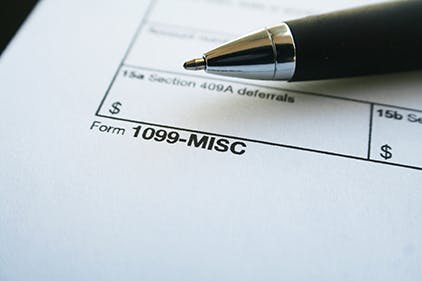Form 1099? What's That?
One of the most important tax and payroll issues a company has to address is who falls under the category of “employee” and who falls under “independent contractor”.

One of the most important tax and payroll issues a company has to address is who falls under the category of 'employee' and who falls under 'independent contractor'. Once that is determined, the next step is making sure each gets the correct forms. True employees get Form W-2 each year, and freelancers get Form 1099-MISC. This form can be used for various payments, and one of the most common and significant uses is for independent contractors.
You must issue a Form 1099-MISC to each non-employee you pay $600 or more during the year, a requirement for all trades or businesses. Nonprofits, state and local governments all have to file this form if they pay a non-employee this amount.
Corporate Payments
The adaptable Form 1099-MISC is also required in some situations, such as:
- Medical and health care payments
- Attorneys' fees.
- Substitute payments in lieu of dividends or tax-exempt interest.
- Payments by a federal executive agency to vendors for services.
However, except for specified corporate payments, Form 1099-MISC is not typically used for commercial expenditures. There are many payments for which Form 1099-MISC is not appropriate, including:
- Payments for merchandise, telegrams, telephone, freight, storage and similar expenses.
- Payments of rent to real estate agents.
- Military differential wage payments made to employees while they are on active duty in the armed forces or other uniformed services (report on Form W-2).
- Business travel allowances paid to employees (may be reportable on Form W-2).
Questions? More information is available on the IRS site. Want to know more about independent contractors and employee misclassification?
Keep reading: related insights
Payroll Insights Newsletter
Subscribe to our quarterly newsletter for exclusive payroll insights.
